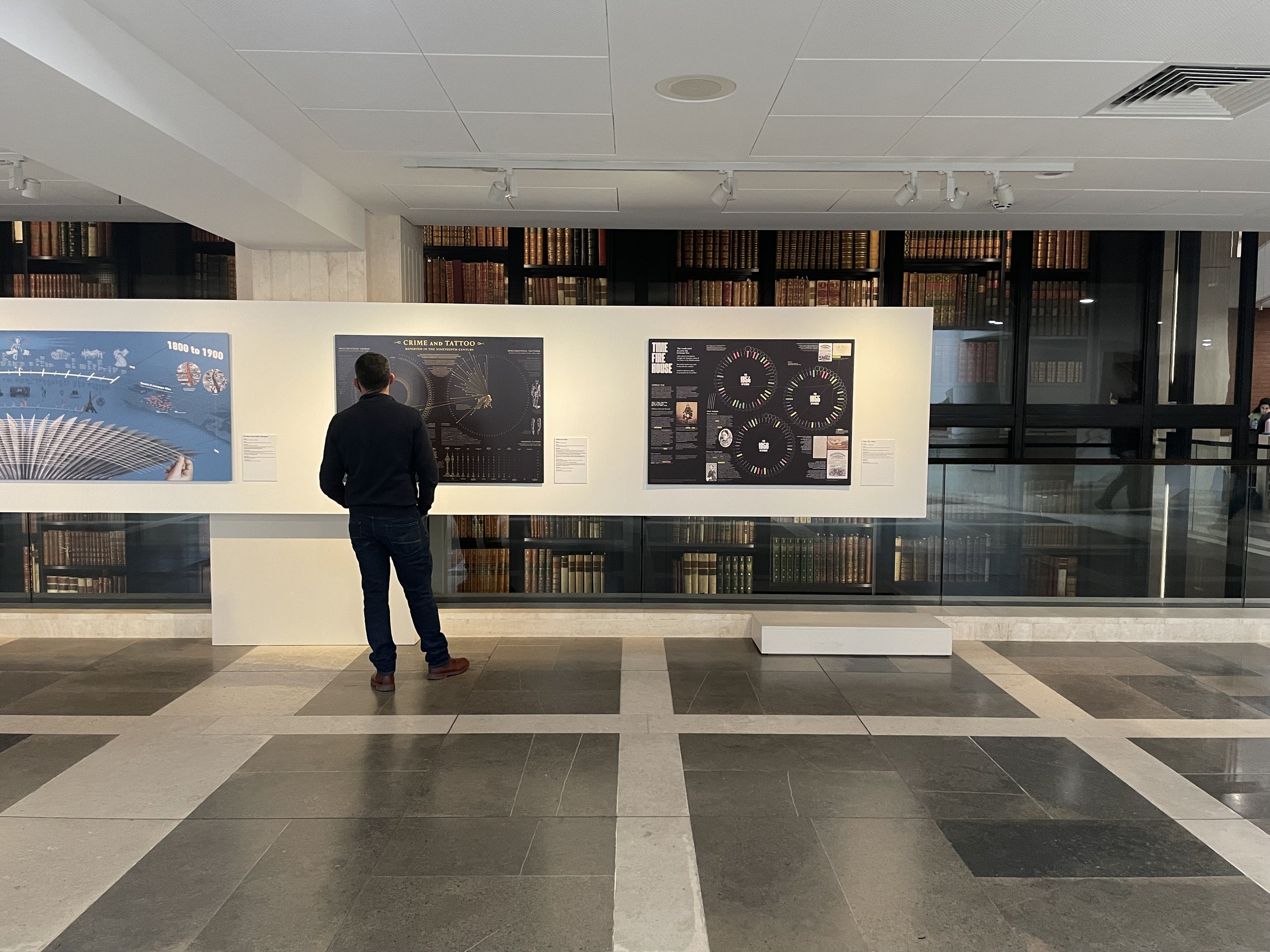Transforming data into meaningful stories
Poetic Data Storytelling—“A space where technology and science are in the service of deeply human, emotional narratives. Where data becomes a language of memory, and technology becomes a vessel for empathy” — Tiziana Alocci

Gucci – Nature in C Major
In this artwork, commissioned by Gucci for the exhibition Gucci | Bamboo Encounters curated by 2050+ for the Milan Design Week 2025, Alocci explores bamboo — not just as a material but as a living archive, a symbol of resilience, craftsmanship and organic evolution.

National Gallery – Maps of Paintings
An experimental mapping project commissioned by the National Gallery in London to discover how some of the National Gallery’s National Treasures have moved through time.

Nexus – Frequencies of Belonging
A site-specific audiovisual installation exploring the emotional landscape of belonging through voice, light, and data-driven sound.

UNIT London – Emotional Geography
Releasing exclusively via Unit London Editions, the print series is the result of Alocci’s extensive travels over the past years, as she records the world around her.

The British Library – Visualising Victorian News Exhibition
Commissioned by The British Library in 2019, Visualising Victorian News came together as an exhibition using data from digitised British Library newspapers to explore themes from 19th-century news and reimagine aspects of British 19th-century history.

Tokyo Love Story – Electromagnetic Sounds of Tokyo
Tokyo Love Story: A Sensory Journey Through The Acoustic Vibrations of the Lights of Tokyo is a solo show by Alocci exploring the hidden electromagnetic pulse of Tokyo's urban landscape.

The Shapes and Sounds of Visa Inequality
This project transforms Schengen visa rejection rates from 2023 into a captivating audio-visual narrative. Data sonification, the process of transforming data into sound, adds an emotional dimension to information that might otherwise remain abstract.

Sonic Tides – When Noise Pollution Becomes Visible
Sonic Tides translates 24 hours of collected airport sound data into powerful ocean waves through audio-reactive projections.

Robertet Group – Digital Immersive Exhibition
The Robertet Group's Scented Connections exhibition gave form to 15 million data points on perfumes, with 30 data portraits being crafted as representations of 100 recent formulas by the team’s artisans.

Shoreditch Arts Club x Commune
An immersive, audio-reactive video installation exploring human emotions and the yearning for acknowledgement. Premiered on March 1st 2024 at the Shoreditch Arts Club in London.

‘Necessity’ – Visualising soundscapes
‘Necessity’, inspired by the Quantified-Self movement in art, is a series of audio-visual, data-driven transmutations of sounds recorded by the artist.

Visualising the voices of Ukrainian refugees
Liberty Leading The People amplifies Ukrainian refugees' stories into a poignant composition – a totem that symbolised freedom and justice amid Europe's conflicts.
Selected clients
The National Gallery (London), Unit London, Lufthansa Group, British Library, David Gilmour, Condé Nast, Robertet Group, The Orb, The Guardian, Thomson Reuter Foundation, Corriere della Sera, University of the Arts London, Open Data Institute, Sum Over Histories, BBC, RCS Media Group, Signal Noise, Nexus Agency, HUGE Inc.
